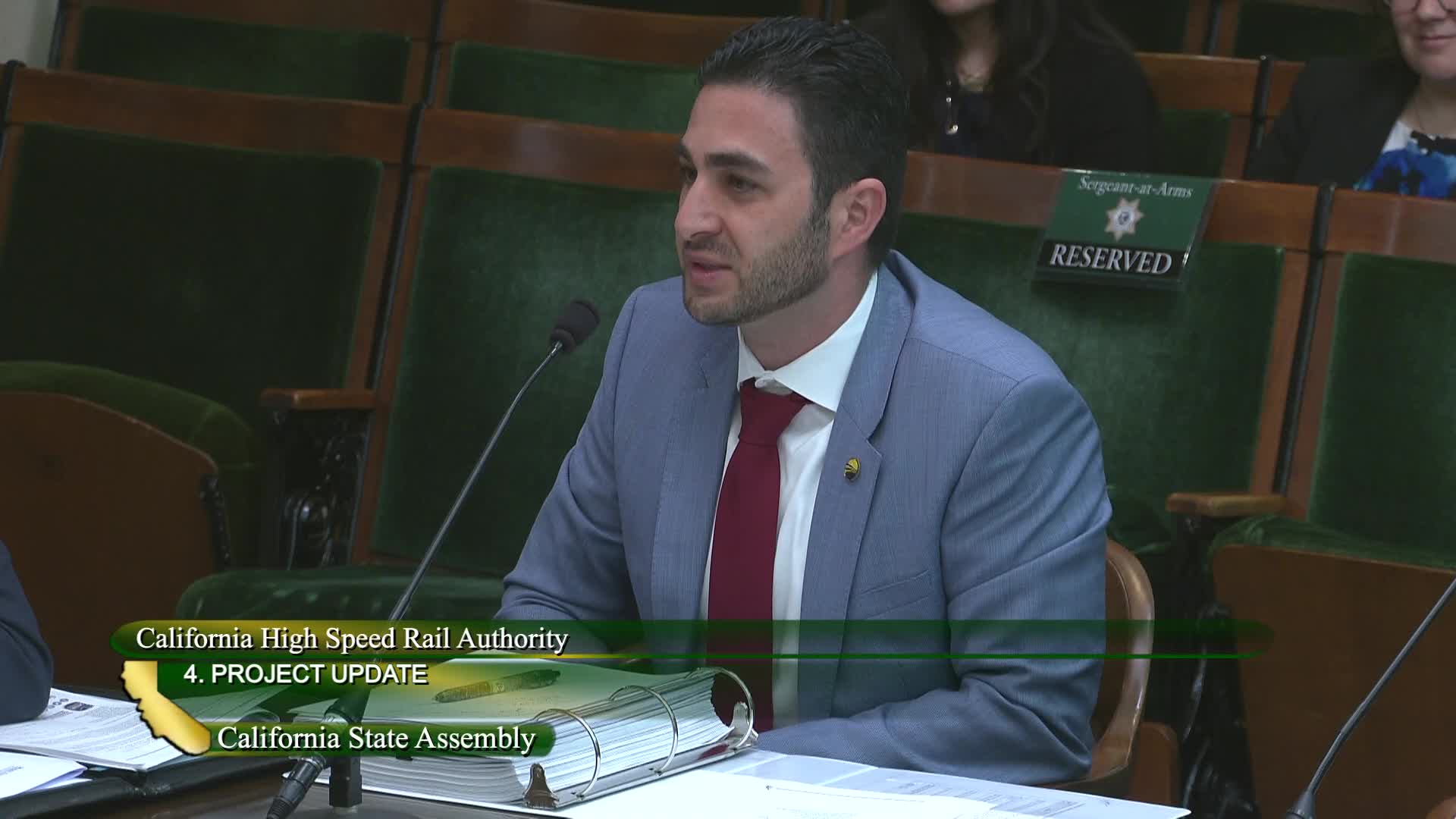California High-Speed Rail faces $7B deficit and explores public-private partnership options
March 26, 2025 | California State Assembly, House, Legislative, California
This article was created by AI summarizing key points discussed. AI makes mistakes, so for full details and context, please refer to the video of the full meeting. Please report any errors so we can fix them. Report an error »

In a recent meeting of the Assembly Budget Subcommittee No. 4 on Climate Crisis, Resources, Energy, and Transportation, California lawmakers confronted the pressing financial challenges facing the state's high-speed rail project. The discussions highlighted a significant $7 billion budget deficit, with concerns that this figure could continue to grow without a clear plan for resolution.
Assembly members expressed urgency in addressing the deficit, emphasizing the need for timely information to facilitate informed decision-making. One member pointed out the critical nature of the situation, stating, "We have no plan for the $7 billion deficit... and we have a short time to try to solve the problem." This sentiment reflects a growing frustration among lawmakers regarding the lack of effective strategies to manage the financial shortfall.
The meeting also touched on potential solutions, including the exploration of public-private partnerships (P3s) as a means to alleviate financial burdens. While some members acknowledged the potential benefits of such arrangements, they also cautioned against the state's historical challenges with P3s. Concerns were raised about the risks involved, particularly regarding private sector willingness to invest without guaranteed ridership and revenue streams.
Assembly members drew comparisons to Japan's high-speed rail system, which has successfully utilized public-private partnerships. They noted that Japan's larger population makes it less risky for private companies to invest in such projects. This comparison underscored the complexities California faces in attracting private investment for its high-speed rail initiative.
As discussions progressed, the need for political courage and innovative thinking was emphasized. Lawmakers urged the authority overseeing the high-speed rail project to consider creative solutions, including leveraging real estate value around stations to fund the project. The call for a comprehensive financial strategy was clear, with members stressing the importance of having these conversations while the legislature is still in session.
In conclusion, the meeting underscored the urgency of addressing California's high-speed rail funding crisis. With a significant budget deficit looming and no clear plan in sight, lawmakers are calling for immediate action and innovative solutions to ensure the project's viability. The outcome of these discussions will be crucial in determining the future of high-speed rail in California and its potential impact on the state's transportation landscape.
Assembly members expressed urgency in addressing the deficit, emphasizing the need for timely information to facilitate informed decision-making. One member pointed out the critical nature of the situation, stating, "We have no plan for the $7 billion deficit... and we have a short time to try to solve the problem." This sentiment reflects a growing frustration among lawmakers regarding the lack of effective strategies to manage the financial shortfall.
The meeting also touched on potential solutions, including the exploration of public-private partnerships (P3s) as a means to alleviate financial burdens. While some members acknowledged the potential benefits of such arrangements, they also cautioned against the state's historical challenges with P3s. Concerns were raised about the risks involved, particularly regarding private sector willingness to invest without guaranteed ridership and revenue streams.
Assembly members drew comparisons to Japan's high-speed rail system, which has successfully utilized public-private partnerships. They noted that Japan's larger population makes it less risky for private companies to invest in such projects. This comparison underscored the complexities California faces in attracting private investment for its high-speed rail initiative.
As discussions progressed, the need for political courage and innovative thinking was emphasized. Lawmakers urged the authority overseeing the high-speed rail project to consider creative solutions, including leveraging real estate value around stations to fund the project. The call for a comprehensive financial strategy was clear, with members stressing the importance of having these conversations while the legislature is still in session.
In conclusion, the meeting underscored the urgency of addressing California's high-speed rail funding crisis. With a significant budget deficit looming and no clear plan in sight, lawmakers are calling for immediate action and innovative solutions to ensure the project's viability. The outcome of these discussions will be crucial in determining the future of high-speed rail in California and its potential impact on the state's transportation landscape.
View full meeting
This article is based on a recent meeting—watch the full video and explore the complete transcript for deeper insights into the discussion.
View full meeting
